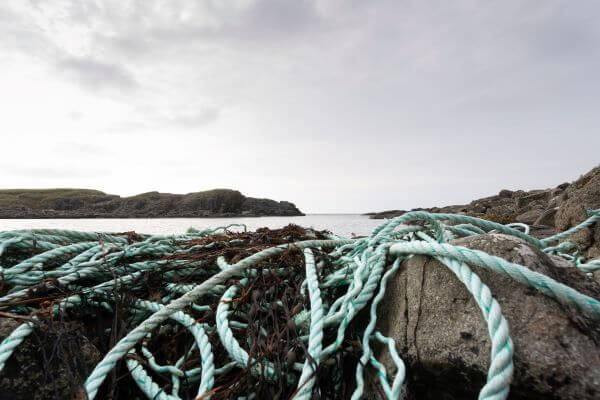
First Published: 21st July 2023, written by Olivia Doonan | Last Updated on 22nd July 2023 | Reviewed and Edited by Chloe Safilo
In the dynamic world of fashion, trends evolve rapidly, satisfying aesthetic desires while exemplifying ethical responsibility. One such evolving trend is eco-friendly bikini design, making waves in the swimwear industry. Indeed, this is not just a mere design preference but a response to the urgent need for more sustainable practices in the fashion world, mitigating the environmental devastation previously caused.
Understanding the Importance of Sustainable Fashion
Shifting towards more sustainable and less environmentally harmful alternatives is growing ever more critical in today’s climate. The fashion industry, long accused of being one of the prominent pollution contributors, has been seeking to revamp its image by transitioning towards greener business practices.
This sea change is nowhere more keenly felt than in the swimwear segment, particularly through eco-friendly and sustainable bikinis. These innovative offerings not only fulfil style demands but also reduce carbon footprint, making a significant impact on the preservation of planet Earth.
Emergence of Eco-Friendly Bikinis Trends
Initially, eco-fashion might have been regarded as a fleeting sensation or a fad, but it is abundantly clear that it’s a reality. The preference for organic, recycled, and eco-friendly materials is revitalising the swimwear landscape. Notably, eco-friendly bikini design has gathered considerable traction, earning a rightful place in swimwear collections worldwide. Creating a valuable fashion product with minimal environmental harm is proving successful, marking a critical turning point in how trendy items are approached.

Materials Used in Eco-Friendly Swimwear
The choice of material largely dictates the sustainability level of a product. For sustainable swimwear brands, materials range from organic cotton to innovative fabrics like Econyl, a sort of nylon regenerated from ocean and landfill waste such as discarded fishing nets, plastic bottles, plastic waste and fabric scraps. These revolutionary fabrics, coupled with ethical manufacturing processes, are transforming the face of sustainable swimwear.
Incorporating Recycled Materials in Bikini Design
In an era of heightened environmental consciousness, the use of recycled materials in bikini designs is soaring. The application of post-consumer materials not only reduces waste but also saves energy otherwise spent on producing new materials. These bikinis, made from materials such as recycled polyester or recycled nylon, are generally durable, quality-assured, and consciously designed with the environment in mind.
Versatile Design Trends in Eco Swimwear
Eco swimwear is moving beyond the stereotypical “earthy” look to embrace a broad spectrum of styles. From classic monochromes to ethereal pastels, eco bikinis come in an extensive range of designs that cater to various personal styles and preferences. Therefore, opting for eco-friendly swimwear doesn’t mean compromising one’s personal style or fashion leanings.
Artistic Prints in Sustainable Bikini Fashion
Sustainable bikinis no longer mean plain, lacklustre designs. Innovative brands are introducing unique, artistic prints to their collections, adding visual interest and ensuring that eco-conscious choices don’t come at the expense of style. These unique prints range from minimalistic fine-line art to colourful geometric patterns, offering an adventurous twist to sustainable fashion.
Popular Brands Embracing Eco-Friendly Swimwear
Leading brands globally are embracing the shift towards eco-friendly swimwear. For instance, Patagonia, an American outdoor clothing company, has taken a significant step towards sustainability by introducing a swimwear line crafted wholly from recycled nylon. Combining sustainability with performance, Patagonia’s swimwear line serves as an example of how dedication to earth-friendly initiatives need not compromise aesthetic appeal or quality.
Role of Technology in Sustainable Design
Incorporating technology into sustainable fashion has been a key facilitator in realising eco-friendly designs in the swimwear industry. Innovations like 3D printing allow for a reduction in waste by producing only the needed amount of material. Technologies for recycling and upcycling materials are also making processes environmentally friendly, moving us towards a more sustainable industry.
Balancing Comfort with Sustainable Materials
One of the essential considerations in swimwear design is comfort. While sustainably sourced materials are crucial, they must be skin-friendly and comfortable. The softness of organic materials like cotton, the stretch of recycled elastane, and the durability of regenerated nylon all come together to provide comfort, durability, and eco-friendliness in eco-friendly bikini designs.

Impact of Sustainable Swimwear on Environment
The shift towards sustainable swimwear has a significant environmental impact. For every recycled polyester swimwear piece, several recycled plastic bottles are prevented from ending up in oceans or landfills. Furthermore, processes involved in creating eco-friendly swimwear consume less water and energy compared to traditional methods, thereby reducing emissions and contributing to a healthier environment.
Consumer Response Toward Eco-Friendly Bikinis
Consumer response to eco-friendly bikinis has been overwhelmingly positive so far. Slowly but surely, shoppers are investing in these sustainable fashion choices. Many consumers are beginning to understand that their supply chain purchasing decisions can profoundly impact the environment, resulting in a sharp turn towards conscious consumerism, with eco-friendly swimwear brands being one of the preferred choices.
Conclusion
Eco-friendly bikini trends represent not just a fashion statement but a commitment to environmental responsibility. The myriad of design possibilities coupled with the environmental benefits makes these offerings difficult to overlook. It might still be an evolving niche, but with time and continued consumer support, eco-friendly and sustainable bikinis will become the new norm, redefining the relationship between fashion and the Earth’s future.

















































